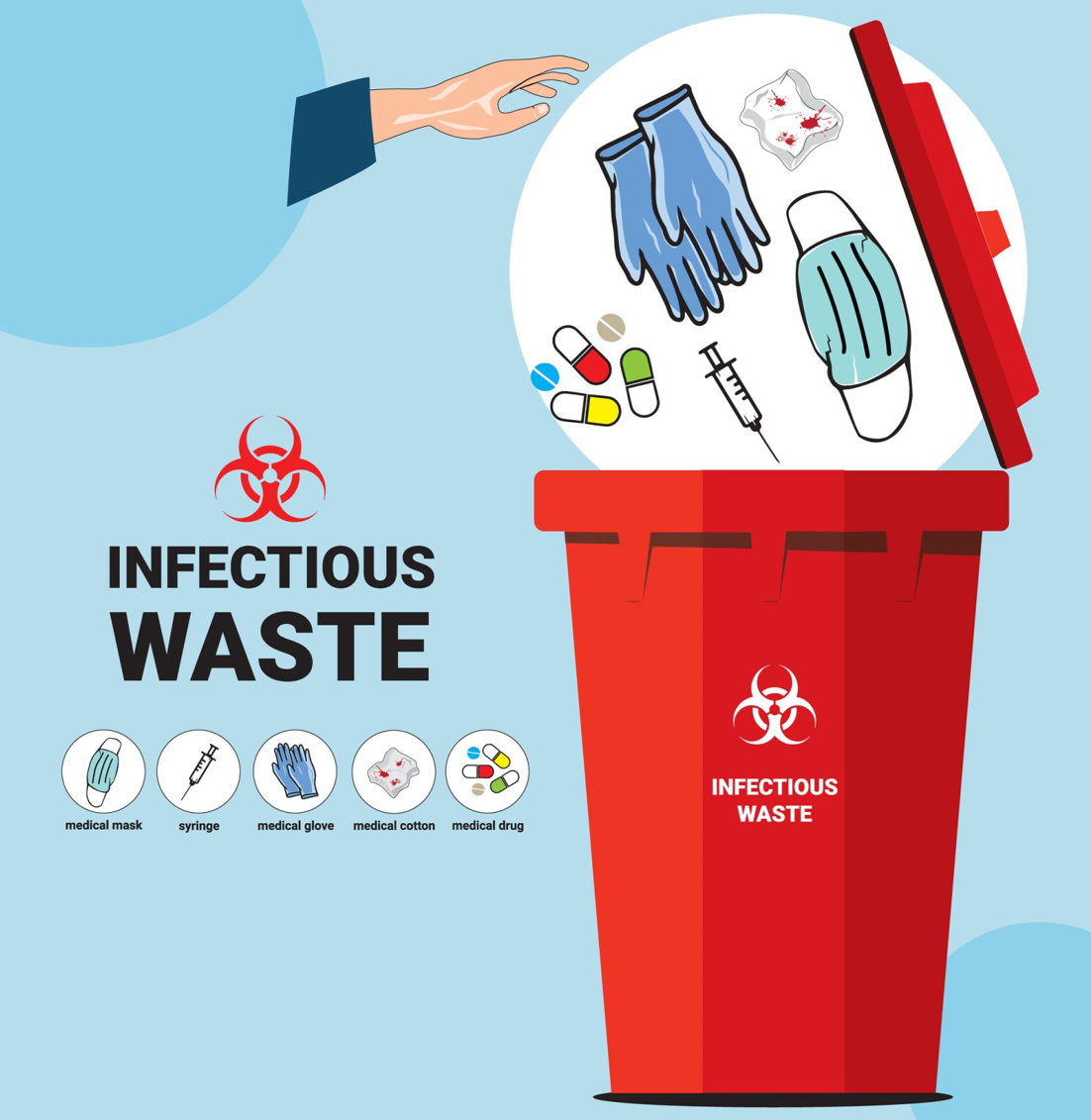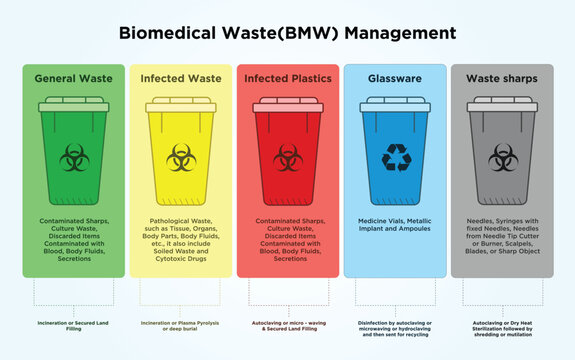Compliance and Rules for Medical Garbage Disposal
Conformity and laws for medical waste disposal play an essential role in guaranteeing the security and health of both healthcare experts and the general public. Correct monitoring of medical waste is vital to stop the spread of infections, shield the setting, and preserve public health and wellness. This requires adherence to particular standards and protocols established forth by regulative companies and bodies. These regulations include different aspects, consisting of the classification and segregation of clinical waste, correct storage and handling treatments, along with transportation and disposal methods. By adhering to these guidelines, medical care facilities can lessen the threat of contamination and possible injury to individuals and the environment. This post will check out the significance of conformity and offer a summary of the essential guidelines regulating clinical garbage disposal.
Importance of Compliance
The value of compliance with policies for medical garbage disposal can not be overstated. Appropriate disposal of clinical waste is critical for ensuring the safety and security and well-being of healthcare employees, individuals, and the public. Medical waste, which consists of things such as utilized needles, infected gloves, and biomedical waste, can position major health and wellness dangers if not handled and disposed of effectively.
Compliance with policies makes certain that clinical waste is handled in a manner that reduces the capacity for direct exposure to unsafe materials and contagious conditions - medical waste removal. It aids avoid the spread of infections, such as HIV, liver disease B and C, and various other bloodborne microorganisms. Conformity likewise plays a crucial role in securing the setting by stopping contamination of water resources, dirt, and air
Failing to follow policies can lead to serious effects for healthcare centers, including fines, lawful activity, and damage to their reputation. Additionally, non-compliance might jeopardize the wellness and safety and security of health care employees, people, and the neighborhood.
Compliance with laws for clinical waste disposal needs adherence to details guidelines and procedures. These might include proper partition, packaging, labeling, and storage of clinical waste. It also entails using authorized disposal methods, such as autoclaving, landfilling, or incineration, relying on the kind of waste.
Regulative Agencies and Bodies
Regulatory agencies and bodies play a crucial role in looking after conformity with policies for clinical garbage disposal. These companies are accountable for setting protocols, standards, and standards to guarantee the safe and proper handling of medical waste. They apply and check compliance to safeguard public health and the atmosphere.
One of the most popular regulative agencies in the United States is the Environmental Security Firm (EPA) The EPA is in charge of controling the storage space, transportation, treatment, and disposal of medical waste. They establish standards for waste generators, carriers, and therapy centers to comply with, ensuring that all essential preventative measures are taken to protect against the spread of diseases and contamination.
One more vital governing body is the Occupational Safety And Security and Health And Wellness Administration (OSHA) OSHA establishes criteria and policies to shield employees from work risks, including those pertaining to clinical waste. WasteX Medical Waste Disposal. They provide standards for the risk-free handling and disposal of medical waste to safeguard staff members in healthcare facilities
Along with these federal firms, specific states additionally have their very own governing bodies that supervise medical garbage disposal. These companies might have their own particular guidelines and requirements that need to be complied with.

Classification and Partition of Medical Waste
To ensure appropriate management of clinical waste, it is necessary to identify and segregate it according to established standards and methods. medical waste disposal service. Category and segregation play a critical function in minimizing the risk of infection, shielding the setting, and ensuring the security of healthcare employees and the basic public
Clinical waste is categorized into different categories based upon its prospective threat level. These categories include transmittable waste, pathological waste, sharps waste, pharmaceutical waste, chemical waste, and contaminated waste. Each category needs particular handling, disposal, transport, and storage space techniques to lessen the threat of exposure and contamination.
Partition of clinical waste involves dividing different sorts of waste at the resource. This procedure guarantees that waste with various hazard levels is not mixed, minimizing the possibility for cross-contamination and making disposal procedures extra reliable. Proper partition is achieved through making use of color-coded tags and containers, which assist medical care employees and waste administration employees identify and take care of each type of waste correctly.
Along with classification and segregation, medical care centers should additionally stick to local, state, and government laws relating to medical waste administration. These regulations describe certain demands for storage space, transportation, therapy, and final disposal of clinical waste, making sure compliance and maintaining public health and security.
Appropriate Storage Space and Handling Procedures
Correct storage space and handling procedures play an important role in ensuring the risk-free and certified monitoring of clinical waste. Clinical waste, which consists of items such as used syringes, contaminated gloves, and expired medications, can present severe health and ecological threats otherwise managed properly. Therefore, it is critical for healthcare facilities and other generators of medical waste to implement strict storage and taking care of protocols.
To start with, medical waste should be kept in resilient, leak-proof containers that are particularly designed for this purpose. These containers ought to be labeled with the universal biohazard sign and the words "medical waste" to plainly indicate the materials. Furthermore, the containers must be kept safely shut to stop any kind of possible leak or spillage.
Furthermore, it is necessary to segregate various types of clinical waste to avoid cross-contamination. Sharps, such as needles and scalpels, need to be kept in puncture-resistant containers to minimize the danger of injuries - WasteX Medical Waste Disposal. Chemical waste, such as disinfectants and solvents, need to be saved individually from various other kinds of medical waste to stop unsafe exposures or chemical reactions

Transport and Disposal Methods
Healthcare facilities must make certain the risk-free transportation and correct disposal of their clinical waste to abide with guidelines and secure public health. Transportation and disposal approaches play a vital duty in avoiding the spread of transmittable conditions and minimizing the environmental effect of clinical waste.
To move medical waste, health care facilities must utilize puncture-resistant and leak-proof containers that are labeled navigate to this website with the biohazard symbol. These containers should be firmly secured to avoid any type of leakage during transport. Additionally, health care facilities should establish methods for the transportation process, consisting of the use of trained workers and committed cars.
Once the clinical waste gets to the disposal center, it undergoes different methods of treatment. One usual technique is incineration, which entails shedding the waste at high temperature levels to ruin microorganisms and decrease the volume of waste. One more method is autoclaving, which utilizes vapor and pressure to disinfect the waste. After therapy, the waste is normally sent out to a land fill or a waste-to-energy facility for final disposal.
It is necessary for medical care facilities to deal with qualified and permitted waste administration firms to make sure proper transport and disposal of clinical waste. These companies have the expertise and sources to manage clinical waste securely and in compliance with regulations.
Verdict
To conclude, compliance with guidelines for clinical garbage disposal is of utmost significance to guarantee public health and wellness and safety. Regulative companies and bodies play an important function in enforcing these policies. Proper classification and segregation of clinical waste, in addition to following ideal storage space and dealing with treatments, are important to stop contamination and the spread of illness. Appropriate transport and disposal approaches have to be implemented to decrease environmental impacts. In general, adherence to conformity and laws is essential to efficiently take care of clinical waste.
Medical waste, which includes products such as utilized needles, contaminated handwear covers, and biomedical waste, can present severe wellness threats if not dealt with and disposed of correctly.
These categories consist of transmittable waste, pathological waste, sharps waste, pharmaceutical waste, chemical waste, and radioactive waste.Segregation of clinical waste includes dividing different kinds of waste at the source. Proper partition is achieved via the usage of color-coded containers and tags, which help healthcare employees and waste monitoring personnel recognize and take care of each type of waste properly.
Chemical waste, such as solvents and anti-bacterials, should be kept independently from various other kinds of clinical waste to avoid harmful direct exposures or chemical reactions.